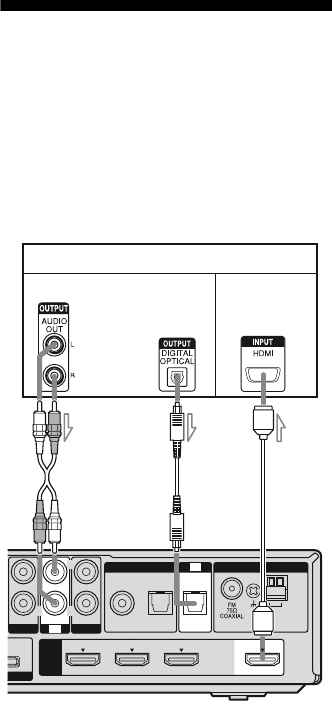
16
US
3: Connecting the TV
You can watch the selected input image when
you connect the HDMI OUT jack to a TV.
It is not necessary to connect all the cords.
Connect audio and video cords according to
the jacks of your components.
Before connecting the cords, be sure to
disconnect the AC power cord.
Notes
• Be sure to turn on the receiver when the video and
audio signals of a playback component are being
output to a TV via the receiver. Unless the power
is turned on, neither video nor audio signals will be
transmitted.
• When connecting optical digital cords, insert the
plugs straight in until they click into place.
• Do not bend or tie optical digital cords.
Tips
•To output the sound of the TV from the speakers
connected to the receiver, be sure to
–connect the audio output jacks of the TV to the
TV IN jacks of the receiver.
–turn off the TV’s volume or activate the TV’s
muting function.
• All the digital audio jacks are compatible with
32 kHz, 44.1 kHz, 48 kHz, and 96 kHz sampling
frequencies.
AM
ANTENNA
R
T
m
A MAX
AUDIO IN
VIDEO 1
VIDEO 2
R
L
R
AUDIO IN
SA-CD
/
CD
COAX IN
SAT
OPT IN
DIGITAL
OPT IN
TV
AUDIO IN
TV
HDMI
BD IN OUTSAT INDVD IN
L
TV
Audio signal
A
AAudio cord (not supplied)
BOptical digital cord (not supplied)
CHDMI cable (not supplied)
We recommend that you use a Sony HDMI
cable.
Audio/video
signal
BC


















